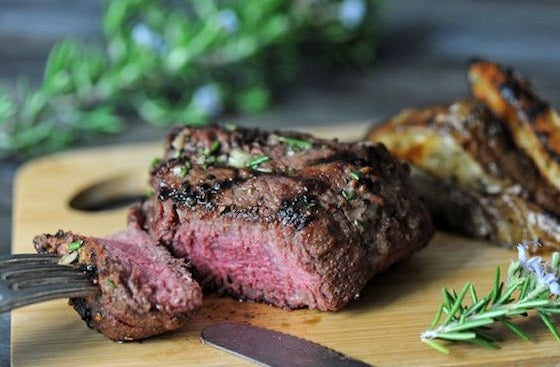The Art and Science of Searing Meat: Elevating Culinary Excellence
Searing meat is a culinary technique that has stood the test of time, transcending generations and culinary traditions. From the sizzling streets of street food vendors to the elegant kitchens of Michelin-starred restaurants, the act of searing meat has become an art form that transforms a humble cut into a succulent, flavourful masterpiece. In this exploration, we delve into the rich history, the science behind searing, and the nuanced methods that chefs employ to achieve the perfect sear.
A Historical Glimpse:
The practice of searing meat can be traced back centuries, with ancient cooking methods often involving open flames and rudimentary tools. Early humans discovered that exposing meat to direct heat not only cooked it but also imparted a distinct flavour and texture. As civilizations progressed, so did the techniques of searing, evolving from open flames to primitive grilling setups.
In the 19th century, advancements in cooking technology, such as the advent of cast-iron pans and stovetops, revolutionised the art of searing. The ability to control heat more precisely allowed chefs to experiment with different searing techniques, giving rise to a myriad of culinary possibilities. The Industrial Revolution further fuelled the popularity of searing, as it became more accessible to a wider audience.
The Science of Searing:
At its core, searing is a process that involves cooking meat at high temperatures, typically in a pan or on a grill, to create a flavourful crust on the exterior while locking in the juices within. Contrary to a common misconception, searing does not actually "seal in" the juices; instead, it enhances the Maillard reaction.
The Maillard reaction, named after French chemist Louis-Camille Maillard, is a complex chemical reaction that occurs between amino acids and reducing sugars when exposed to heat. This reaction is responsible for the browning of the meat's surface, resulting in the formation of numerous flavour compounds that contribute to the rich, savory taste associated with seared meat.
Key elements of the Maillard reaction include:
- Amino Acids: Proteins in the meat, specifically amino acids like lysine and arginine, react with sugars under high heat, leading to the creation of new flavour compounds.
- Caramelisation: The Maillard reaction often occurs simultaneously with caramelisation, the browning of sugars. This dual process contributes to the development of a complex flavour profile and an appealing colour on the meat's surface.
- Flavour Development: As the Maillard reaction progresses, a range of volatile compounds is released, producing a symphony of aromas and flavours that tantalize the taste buds.
Methods of Searing:
- Pan Searing:
- A popular indoor method, pan searing involves using a hot, heavy-bottomed pan to cook meat. The direct contact with the hot surface facilitates the Maillard reaction, creating a flavourful crust. Chefs often use oils or fats to enhance the process and add depth to the flavour.
- The Pep Griddle or Wok would be perfect for this method.
- Grilling:
- Outdoor grilling remains a beloved method for searing meat. The open flame imparts a distinctive smokiness, complementing the Maillard reaction. The grill's grates create beautiful grill marks and contribute to the overall visual appeal of the seared meat.
- Sous Vide and Searing:
- The sous vide cooking method, where meat is vacuum-sealed and cooked in a water bath at a precise temperature, has gained popularity. While sous vide cooks the meat evenly, a final sear in a hot pan or on a grill is often employed to achieve the desired crust.
- Torch Searing:
- Torch searing involves using a culinary torch to quickly sear the surface of the meat. This method allows for precise control over the searing process and is often used in professional kitchens to finish dishes with a perfect sear.
Tips for a Perfect Sear:
- Pat Dry Before Searing:
- Moisture on the surface of the meat inhibits the Maillard reaction. Patting the meat dry with paper towels before searing ensures a better crust formation.
- Preheat the Pan or Grill:
- A hot cooking surface is essential for a good sear. Preheating the pan or grill allows for immediate contact with high heat, jumpstarting the Maillard reaction.
- Use the Right Oil:
- Choosing the right cooking oil is crucial. Oils with high smoke points, such as grapeseed or vegetable oil, prevent burning and contribute to a successful sear.
- Avoid Overcrowding the Pan:
- Overcrowding the pan can lead to uneven cooking and hinder the development of a proper crust. Give each piece of meat ample space for optimal searing.
- Let the Meat Rest:
- Allowing the seared meat to rest before serving is essential. This rest period lets the juices redistribute, ensuring a juicy and flavourful final product.
Searing meat is a timeless culinary technique that transforms a simple cut into a culinary masterpiece. From ancient cooking methods to modern culinary innovations, the art of searing has evolved, but its fundamental principles remain rooted in the science of the Maillard reaction. As home cooks and professional chefs alike continue to experiment with different methods and flavours, searing remains a cornerstone in the pursuit of gastronomic excellence, proving that a perfectly seared piece of meat is a symphony of taste, texture, and tradition.
Do you sear your meat when cooking? Have you tried our Pep Griddle pan to create chargrill lines or the Pep Wok for a larger seared crust... Which would you choose?

